A disease in its own right. It’s rare, and quickly changes lives.
Neuromyelitis optica spectrum disorder (NMOSD) is a rare and debilitating autoimmune disease driven by severe, recurrent central nervous system (CNS) attacks which can result in blindness, paralysis, and death.1

Globally, NMOSD affects approximately 0.5-4 in every 100,000 people.2,3

Over 10,000 of these people live in Europe.4

Median age of disease onset is 40.5

Women are 9x more likely to be impacted than men.6

75% of seropositive patients with NMOSD may experience pain.7

41% of seropositive patients with NMOSD may become legally blind in at least one eye 5 years after disease onset.8

41% of patients have also reported an initial misdiagnosis of MS (multiple sclerosis).9
Historically, NMOSD was often misdiagnosed or missed due to its similarities with other conditions, such as MS.10 However, the two diseases are distinct and NMOSD is a condition in its own right. It has a very different clinical and patient trajectory, along with outcomes and management strategies.
People impacted by NMOSD live with unpredictable attacks, 90% are likely to have repeated attacks within five years of an initial attack.11
Unlike other autoimmune diseases, individuals with NMOSD often do not fully recover from attacks, and permanent disability results from accumulating damage attacks.12


NMOSD |
MS |
|---|---|
| Key symptom: Severe vision impairment |
Key symptoms: Fatigue & cognitive impairment (incl. information processing speed & attention)17 |
| Severe acute episodes can lead to permanent disability | Progressive disability caused by individual, typically mild, episodes |
| Permanent CNS damage | Often experience better recovery from attacks |
| AQP4 antibody seropositive* | AQP4 antibody seronegative |
* 80% of people with NMOSD are AQP4 antibody seropositive, but people with MS are always seronegative.12,18
Differential diagnosis of NMOSD and MS is important because MS treatment may be ineffective against, or may even exacerbate NMOSD.19
AQP4-IgG serology is a confirmatory diagnostic for NMOSD.20,21
A cell-based assay is the most reliable test and highly recommended.20,22
Read personal stories and experiences submitted by patients below.
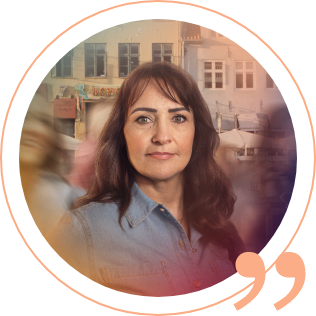
Originally from Brazil, Leda was first diagnosed with NMOSD in 2018. This period of time was painful and frustrating for her as she was an incredibly active person; teaching Zumba and training in boxing, she was also planning on running a half-marathon, until one day the entire left side of her body became paralysed, and she lost 80% of her vision.
“Things happened very fast. It was terrifying!”
Leda already suffered with lupus, and it took 4 months of painful tests and different diagnoses (ranging from cancer to MS) for her to get an accurate diagnosis of NMOSD. However, she wasn’t told much about the disease and knew nothing herself, so she went home and did her own research. Living and working in a small town meant that she felt she had to share her news with her community at the same time as her family, for whom it was obviously difficult to process.
“I was afraid to call my daughter as my face was hanging down and I did not look like myself.”
Unfortunately, Leda also lost the job that she loved, and this proved to be the catalyst into a deep depression which Leda saw no way out of. A change was needed, and therapy was that change. Leda credits it for helping her to come to terms with her disease and completely changing her outlook on life.
Leda feels she is actually happier now than before. NMOSD has made her re-evaluate her life and she has left her previous feelings of anxiety, fear and need for control behind her, and she now lives completely in the moment.
“It’s ok to accept bad days. Just let it be.”
She is now fully dedicated to being an advocate for the disease and to helping other people cope with it. Leda also dreams of becoming a grandmother and continuing to explore the world together with her husband.
“If I can help one person today, then that will make me extremely happy.”
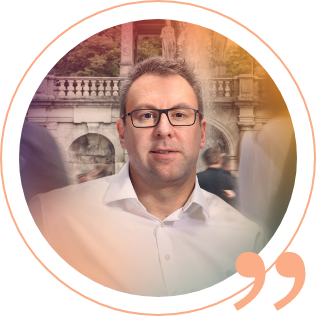
Matthias was on holiday in New York in 2010 and while standing in the brightly lit Times Square with flashing lights coming from every angle, he had to cover his eye because the pain was so strong. The vision in his left eye became completely blurred as though there was fog in front of it.
Back in Munich, he visited his ophthalmologist as soon as possible and after a few tests, he was immediately sent to see a neurologist. Fortunately, the neurologist was very well informed and knew that optic neuritis was indicative of an autoimmune disease.
To recover his vision, his doctor started him on steroid infusions and luckily, Matthias was able to see again. He conducted additional examinations after which nothing was found, but the doctor said that he was concerned that he would meet Matthias once again. Sure enough, two years later, after a long hike, Matthias could not lift his left foot up properly and stumbled over every stone on the way. He went back to see his neurologist and after more tests, he received his NMOSD diagnosis.
“It’s difficult for the family and hard to understand relapses.”
Matthias feels that, looking back at his life prior to him being diagnosed, he didn’t take sufficient care of his health and work very much took priority. Even in the early stages of living with the disease he would push himself to the limits of his physical strength. This brought on relapses and worsened his ability to walk.
“All my energy was used to just constantly move.”
Through to 2019, Matthias’ mobility deteriorated so much, that the use of a wheelchair was necessary for him. As a result, in 2020, he started to take much more care of his health. He has intentionally taken a step down in work so he can focus more on his quality of life and also has a home office which reduces the amount of travelling to the office.
Matthias has learnt a lot from his disease and although he has had to let go of certain things and accept that his energy levels aren’t what they used to be, he is now more respectful and tolerant of people, and also kinder to himself. He accepts that previous hobbies such as motorcycling might be off the table, but he has new interesting hobbies to keep him occupied such as photography. Most importantly he now has no problem in taking a 7-week vacation and has visited many far destinations such as Africa and Hawaii with his wife Chrissi.
“Having fun is now the most important thing and Chrissi and I have fun wherever we go!”
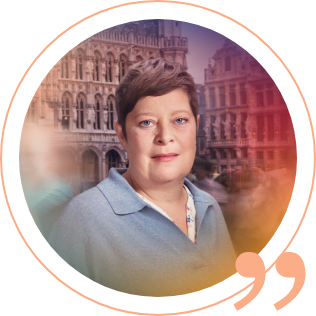
Els had endured eye problems all her life; frequent headaches and eye pain for which she wore glasses and took eye drops. However, in January 2022, she became completely blind in one eye and went to see her ophthalmologist who suspected inflammation of the optic nerve but sent her to the Emergency Room for further testing.
Els spent a week in hospital where she was told she could have MS, an aneurism or even be experiencing the symptoms as a result of a bump to the head. But luckily, she saw a young neurologist who was aware of NMOSD and who encouraged her to undergo an AQP4 test. This provided her with her NMOSD diagnosis and given Els was a nurse at the time, she clearly understood what her NMOSD diagnosis meant.
“I could do my own research around NMOSD, which was both a good and a bad thing!”
For Els, even though she felt generally well, the worst part of living with NMOSD was having to completely change her life to accommodate it. Her habits had to change, and she had to rest more. Els loved her job as a psychiatric nurse, even though it was at times, challenging, but she had to give that up due to her depleted immune system and the tremors she experienced. Unfortunately, she also lost friends who could neither understand nor cope with her diagnosis.
However, some positives have emerged from having NMOSD. Work used to completely dominate her time but now she does more of the things she enjoys and has a better quality of life.
“I now enjoy the little things in life.”
In the beginning, Els naturally thought, ‘Why me?’ and was surrounded by a blanket of negativity. She also felt completely alone. However, through social media she found people who were in a similar situation, and she has become stronger through the community she has discovered.
“I always say, why be normal? Be different!”
Els sees a bright future ahead and is learning more and more every day about how to cope with her disease and embrace it. She is adamant that she has the disease, but the disease doesn’t have her.
“I’m ill but I’m not ILL.”
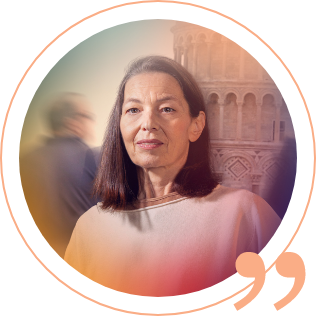
Elisabetta was one of the first ever patients to be diagnosed with NMOSD in her country, but her journey to diagnosis was not easy. She was first told she had MS when she was 23 years old and lived with that diagnosis for over 10 years. Elisabetta lived a relatively normal life until one day it all changed.
“I feel like my life stopped in 2014. I experienced a series of relapses starting from losing my vision in one eye to not being able to walk one morning.”
This led her to start looking for the right specialists to help her understand what she was experiencing, and she found a neurologist who, after a series of tests, diagnosed NMOSD.
Elisabetta loves to be independent, but she has had to accept all the challenges that living with NMOSD presents. She used to be a keen jogger and worked as a hotel manager, but she has now taken a less demanding job at the National Institute for Nuclear Physics (INFN) in Pisa with the reality that sometimes, something as small as getting out of bed in the morning can present its own challenges.
“Everything changes! Your dreams change. The way you look at things… You’re trying to get used to a new life and adapt but even talking about it is hard; and it’s incredibly frustrating!”
However, NMOSD has brought its positives for Elisabetta. She has discovered true friends and her family are a significant part of her life, for whom she is immensely grateful. She is now a huge believer in art therapy and enjoys making ceramics in her spare time.
Elisabetta hopes her health can improve with time and dreams about opening her own hotel with her own independent pottery shop – a small business she can run by herself.
“I want to be considered a woman again, a person. I am not the disease!”
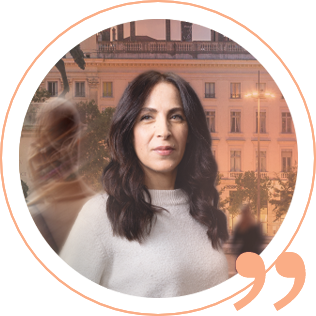
Prior to receiving her NMOSD diagnosis, Souad Mazari had a busy life and was thriving in her career. One day it all changed.
Souad’s first symptoms seemed quite benign, including persisting nausea, vomiting and constant hiccups. Today, Souad recognises this was her first NMOSD attack, known as area postrema syndrome (APS); one of the clinical features of the disease.
“No one knew what was wrong with me. I was going from hospital to hospital, but I kept being sent home. They didn’t have an answer as to why I continue to have these symptoms.”
A few years later, 40-year-old Souad experienced blurry vision and severe headaches. She decided to see an ophthalmologist, who sent her for an emergency MRI to check for MS. The MRI found that Souad had optic neuritis, but the ophthalmologist was still concerned and referred her to a neurologist.
This was the beginning of Souad’s painful four-year journey to diagnosis. She visited multiple hospitals, doctors, and specialists as her condition rapidly deteriorated. One day she started experiencing vision loss in her right eye. Less than a year later, the left side of her mouth, face and scalp were paralysed. Another MRI followed, resulting in an incorrect multiple sclerosis (MS) diagnosis.
“You have all these symptoms but there is little information, and no one tells you anything. I was crying as I thought I was going to die. Your friends and family often don’t understand you; you feel alone!”
In April 2017, Souad experienced her latest relapse which caused her sight loss. Finally, she was referred to specialists who recognised the symptoms and was diagnosed with NMOSD.
“I never accepted the MS diagnosis, but I also wasn’t ready to hear about this new rare disease. I experienced real darkness – the darkness caused by NMOSD but also the darkness caused by this long journey to diagnosis.”
The diagnosis of NMOSD has motivated Souad to help others. Having quit her job due to her inability to continue working, she applied her skills to establish NMO France, a non-profit patient organisation dedicated to supporting patients and improving disease awareness.
“NMO France is all about the patients. It isn’t mine; it is theirs. We need to stay connected, work together, share best practice and educate people about NMOSD because even though this disease is devastating and life altering, it remains rare so the more we talk about it, the more focus we can bring to it.”
Since 2016, March has been recognised as NMOSD Awareness Month and a number of patient advocacy groups have been involved in spreading the word in and around Europe. This year, NMOSD in Focus will join forces with them in raising awareness of the condition. Read more about the 2024 campaign below.
NMOSD in Focus aims to empower people living with the condition to listen to their bodies and discuss their NMOSD with their doctor.
People living with NMOSD often mention that they don’t feel comfortable sharing what could be clear NMOSD related symptoms with their doctors. Sometimes it’s because they don’t think these symptoms are related to NMOSD and other times because they don’t think it’s worth sharing with their doctor, especially if patients are already on treatment.
NMOSD is a lifelong condition, therefore it is critical to listen to your body and pay attention to new or worsening symptoms. It’s important to speak up and advocate for yourself if something does not feel right.
Who better to highlight the importance of all of this than the people who have been there? Souad, Leda, Elisabetta, Matthias and Els have all been diagnosed with NMOSD. Even though they all have a different story, they all agree that speaking to their doctor is critical, especially in a disease as rare as NMOSD. Watch the video below.
The following resources have been developed so you can get involved on social media or by putting up posters in your local area or workplace.
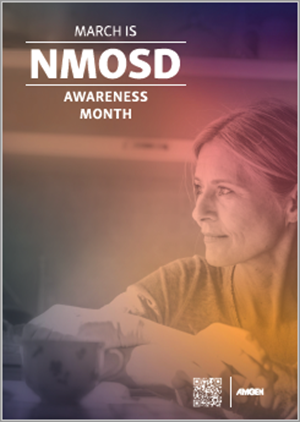
Poster promoting NMOSD Awareness Month which can be printed and displayed in your office, cafe or anywhere else you wish to bring attention to this important milestone.
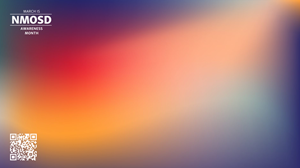
Campaign-branded backgrounds for you to use during March on your preferred virtual communication platform.
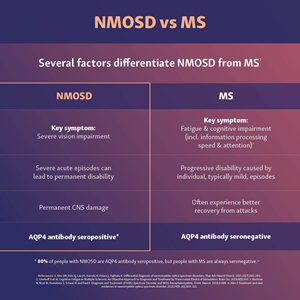
Campaign-branded social tiles for you to use on your own social media channels to help raise awareness of NMOSD (including disease awareness and campaign promotion).
This section is designed to help you navigate the web for existing resources that may be useful and informative. Information on this page is not intended to be used as a substitute for medical care and should not be relied upon for the diagnosis or treatment of neuromyelitis optica spectrum disorder (NMOSD). If you have questions or concerns regarding your health, please contact your healthcare provider.
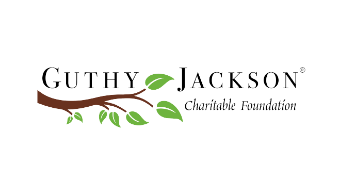
The Guthy-Jackson Charitable Foundation is dedicated to funding research to understand the pathophysiology and biochemistry of neuromyelitis optica (NMO) spectrum disorder. They are an international organisation with representation in Europe.
Please note that this links to an external site which may not offer the same level of protection as this site. This website is not responsible for the content of any external sites.
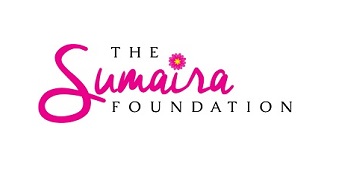
The Sumaira Foundation (TSF) is a global nonprofit organization dedicated to raising awareness of NMOSD, MOGAD and other rare neuroimmune conditions, building communities of support for patients and caregivers, supporting research and advocating on behalf of patients.
Please note that this links to an external site which may not offer the same level of protection as this site. This website is not responsible for the content of any external sites.
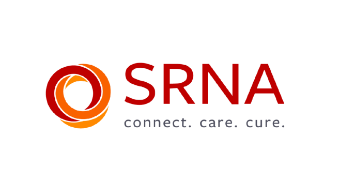
The Siegel Rare Neuroimmune Association (SRNA) is a not-for-profit organisation, with an international presence and representation in Europe, dedicated to the support of children, adolescents, adults and their careers with a spectrum of neuroimmune disorders.
Please note that this links to an external site which may not offer the same level of protection as this site. This website is not responsible for the content of any external sites.
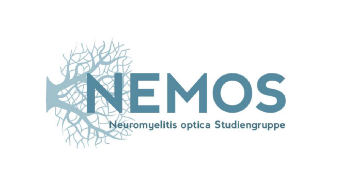
The non-profit association NEMOS e.V. promotes science and research in the field of NMOSD and the dissemination of current scientific knowledge in practice, in addition to organising regular information events for patients and offering opportunities to connect those living with NMOSD.
Please note that this links to an external site which may not offer the same level of protection as this site. This website is not responsible for the content of any external sites.
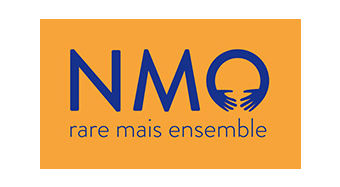
The NMO France association has the essential mission of informing and supporting people affected by neuromyelitis optic (NMO), NMO spectrum disorders (NMOSD), and other rare inflammatory diseases of the brain and spinal cord such as Myelin Oligodendrocyte Glycoprotein Antibody Disease (MOGAD).
Please note that this links to an external site which may not offer the same level of protection as this site. This website is not responsible for the content of any external sites.
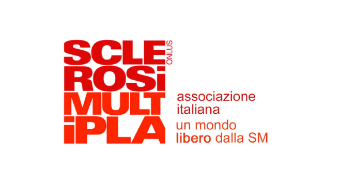
The Italian Multiple Sclerosis Society (AISM) is the only organisation in Italy that addresses every aspect of multiple sclerosis (MS) and related pathologies including NMOSD, through advocating for the rights of people with MS and related pathologies, and providing services through orienting, promoting, and financing scientific research.
Please note that this links to an external site which may not offer the same level of protection as this site. This website is not responsible for the content of any external sites.
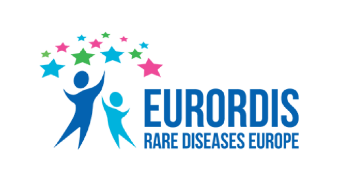
EURORDIS-Rare Diseases Europe is a unique, non-profit alliance of over 1000 rare disease patient organisations that work together across borders and diseases to improve the lives of all people living with rare disease. By connecting patients, families and patient groups, as well as by bringing together all stakeholders and mobilising the rare disease community, EURORDIS strengthens the patient voice and shapes research, policies and patient services across Europe.
Please note that this links to an external site which may not offer the same level of protection as this site. This website is not responsible for the content of any external sites.
Find your local patient organisation
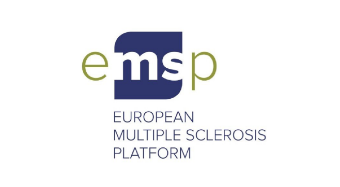
The European Multiple Sclerosis Platform (EMSP) is a pan-European umbrella organisation working to ensure that more than one million people affected by multiple sclerosis (MS) in Europe have a voice in determining their own priorities.
Please note that this links to an external site which may not offer the same level of protection as this site. This website is not responsible for the content of any external sites.
This section is designed to help you find information that may be useful and informative. Information on this page is not intended to be used as a substitute for medical care and should not be relied upon for the diagnosis or treatment of neuromyelitis optica spectrum disorder (NMOSD). If you have questions or concerns regarding your health, please contact your healthcare provider.
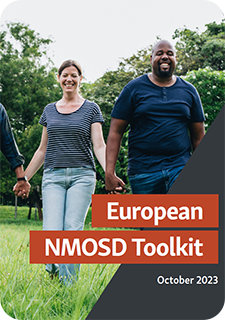
This Toolkit intends to provide information and tips to people impacted by NMOSD in Europe, including individuals living with NMOSD, those that care for them, and those who simply want to learn more. It has been created following a series of NMOSD Patient Advisory workshops, which brought together 11 experts by experience from across Europe, including people living with NMOSD and those caring for them. Discussions at these workshops revealed a lack of information and resources about NMOSD as a key challenge facing people impacted by NMOSD in Europe. This Toolkit seeks to help plug this information gap.
Please note that this Toolkit provides introductory, lay and nonmedical information for the European NMOSD patient community audience. Please always speak to your healthcare professional directly, if you have any questions or concerns related to your personal situation.
Please note that this PDF contains links to external site which may not offer the same level of protection as this site. This website is not responsible for the content of any external sites.
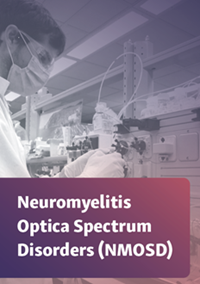
For an overview of NMOSD you can download a brochure with all information here.
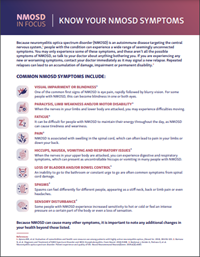
NMOSD symptoms can vary from person to person. This checklist can help you understand and track yours.
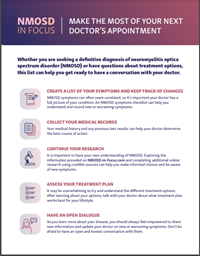
This flyer will help guide your doctor appointments. For a list of useful questions and topics, please click here.
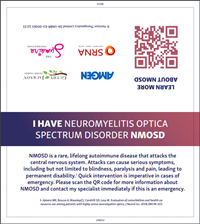
Be prepared for the unexpected with this Emergency Medical Resource Card.